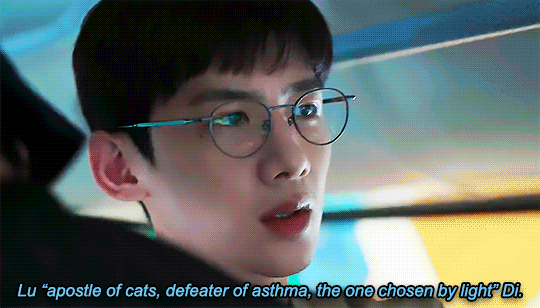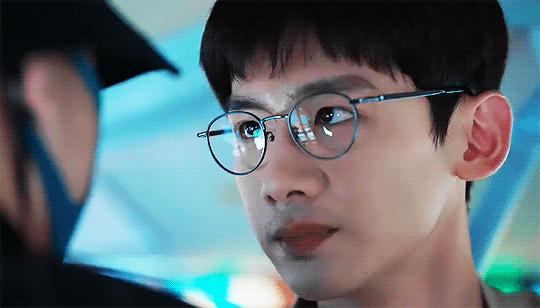#曾柯琅/Zeng Kelang
Explore tagged Tumblr posts
Text
[Cdrama Hanfu]𝗖𝗵𝗶𝗻𝗲𝘀𝗲 𝗙𝗶𝘃𝗲 𝗗𝘆𝗻𝗮𝘀𝘁𝗶𝗲𝘀-𝗦𝗼𝗻𝗴 𝗗𝘆𝗻𝗮𝘀𝘁𝘆 (𝟵𝟬𝟳–𝟭𝟮𝟳𝟵𝗔𝗗) 𝗛𝗲𝗮𝗱𝘄𝗲𝗮𝗿 & 𝗛𝗮𝗻𝗳𝘂 𝗶𝗻 𝗖𝗱𝗿𝗮𝗺𝗮【墨雨云间/𝗧𝗵𝗲 𝗗𝗼𝘂𝗯𝗹𝗲】







【Historical Reference Artifacts】
1.China Portrait of Qian Duo (10 March 852– 6 May 932), King Taizu of Wuyue (吳越太祖)<Ming Dynasty replica>

2.China Five Dynasties and Ten Kingdoms period: <White marble relief sculpture of Musician> Unearthed from the tomb of Wang Chuzhi, the governor of Yiwu Army during the Five Dynasties period


3.Chinese Five Dynasties Period and Ten Kingdoms Murals: Tomb of Feng Hui冯晖墓

【History about Chinese Traditional Headwear: Futou】
Futou (simplified Chinese: 幞头; traditional Chinese: 襆頭/幞頭; also pronounced and written as putou), also known as fu (幞) and toujin (頭巾),[1] was one of the most important forms of Chinese headwear in ancient China with a history of more than one thousand years. The futou first appeared in Northern Zhou under the reign of Emperor Wu where it became prevalent. It was also commonly worn in the Tang and Song dynasties. The futou was typically worn by government officials.The futou was originally turban-like headwear which was tied at the back of its wearer's head, with the two corners going to opposite directions and acting as decorations. From the Sui to the Ming dynasties, the futou evolved and was developed based on the fujin.The futou eventually came to assume a variety of shapes and styles.The shape of the futou worn by the government officials in the Song and Ming dynasties, the latter known as the wushamao (烏紗帽), was based on the futou of the Tang dynasty.
The Chinese futou was also introduced in both Korea Unified Silla and continued to be worn by government officials until the late Korea Joseon: 25 The futou with a jinzi (lining) was also introduced back in the Sogdian areas in Central Asia spreading to the Western regions through the Xinjiang region. The futou with jinzi was also introduced in Japan during the Japan Nara period through Prince Shōtaku.
Sui, Tang dynasty, and Five dynasties and ten kingdoms period
Prior to the Song dynasty, the futou was mostly made of black muslin. In the early Tang, the futou was a sijiaoruanjin (四腳軟巾; 'Four-feet soft scarf'),where all four ribbons were allowed to hang down after being tied. Later on, the early Tang dynasty minister, Ma Zhou, was the first person to use a square kerchief in order to tie a futou and was also the person who added a lining to shape his futou making it more beautiful.The lining which was added to the inside of the futou from the year 614 AD was called jinzi (巾子); the jinzi was used to make the futou look more straight and beautiful in terms of appearance. After being cut into the desired shape, the jinzi was painted black with lacquer and would then be covered by the futou. The jinzi was made with soft and light tung wood and with other materials such as bamboo strips, timbo, miscanthus, silk, and leather. It was also possible to line the futou with a mount-shaped item made out of paulownia (Chinese: 桐木为冠; pinyin: Tóngmù wéi guān; lit. 'paulownia crown') in the front. The step-by-step process to wear the futou with jinzi was to tie the hair up in a topknot, followed by covering the topknot with the jinzi as hard lining, then wrapping the head and the jinzi with a black, square-shaped piece of cloth, and finally tying the cloth in the desired style. The futou with jinzi then became the standard form of futou in the early Tang dynasty. A form of futou with jinzi was a kerchief with two corners attached with two ribbons in opposite directions of each other; the ribbons would then be tied at the back of the wearer's head, allowing the two back ribbons to hang down freely as a form of decoration.With time, the futou with jinzi was further developed, and a ribbon was attached to each corner of the turban to make it more decorative; two ribbons were tied on the top of the head while the back ribbons were tied and were allowed to hang down freely. The futou with jinzi could also have all four ribbons tied at the back of the head and allowed to hang down freely. The yingwangboyang (Chinese: 英王踣样), a futou with a big and forward top jinzi, was created by Emperor Zhongzong and became prevalent during his reign when he awarded this type of futou to his officials. During the reign of Emperor Xuanzong, the neiyang (Chinese: 内样), a futou with a small and round top jinzi became popular around the year 726 AD. Moreover, by adding wire or silk strings inside the added ribbons, the futou could take different shapes and styles depending on its wearer's liking. However, in the Tang dynasty, only the Emperors could use these hard ribbons; these hard ribbons would be bent upward.The Tang dynasties emperor wore a futou with two upturned tails until the Five dynasties period.The Tang dynasty emperors also wore the zhijiaofutou (Chinese: 直腳幞头; pinyin: zhíjiǎofútóu; lit. 'straight-feet futou').
For more the history of futou's evolution, please refer to:
The evolution of futou in China
—————-
Photo:Chinese Actor 曾柯琅/Zeng Kelang
CDrama name:【墨雨云间/𝗧𝗵𝗲 𝗗𝗼𝘂𝗯𝗹𝗲】
🔗Weibo:https://weibo.com/u/7823001376
—————-
#chinese hanfu#Cdrama#墨雨云间/𝗧𝗵𝗲 𝗗𝗼𝘂𝗯𝗹𝗲#the double#hanfu#hanfu accessories#Five Dynasties and Ten Kingdoms period (Chinese: 五代十國)#hanfu_challenge#chinese traditional clothing#china#chinese#漢服#汉服#中華風#futou#Chinese Traditional Headwear#幞头#襆頭/幞頭#墨雨云间#chinese drama#曾柯琅/Zeng Kelang
144 notes
·
View notes
Text
honestly i find it funny that 曾柯琅 Zeng Kelang ended up playing an imperial family member with feelings for his older brother's wife (aka his aunt) twice in two different dramas, The Double and A Journey to Love

photo credits via Gemini on FB
i like this guy (and the voice actor they picked to dub him, makes him sound all majestic and stuff)
i want to see him in more period dramas but his upcoming projects are all modern day...awww
time to hit the bilibili edits i guess lol!
4 notes
·
View notes
Photo




-Actually you can just say my name, and I will trust you immediately. -What’s your name?
Reset开端 (2022) 1.06 vs. 1.10
#开端#reset#asiandramanet#dailyasiandramas#chineseartistsinc#cdramaedit#cdramagifs#cdramanet#lu di#zeng kelang#曾柯琅#xiao heyun#白敬亭#bai jingting#resetedit#cdrama#userkunedits
505 notes
·
View notes